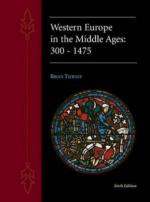|
This section contains 2,177 words (approx. 8 pages at 300 words per page) |

|
Building with Masonry.
Throughout the Middle Ages, the most prestigious and durable edifices—castles, churches, and palaces—were built of stone. However, the loss of the Roman formula for concrete (a mixture of water, lime, and pozzolanic sand akin to modern Portland cement, to which a coarse aggregate of rubble and broken pottery was added) and its replacement in the Middle Ages by a weak lime mortar made complex masonry ceilings difficult to build. Thus, one of the major achievements of medieval architecture was the recovery of the ability to vault monumental interior spaces to dramatic effect. Medieval masons continued many Roman architectural practices, constructing their buildings with rubble (broken, rather than cut stone) walls faced with cut stone blocks or decorative patterns, as seen in the surviving sections of the late-tenth-century cathedral of Beauvais, Notre-Dame-de-la-Basse-Oeuvre. Yet, there were significant variations from region to region in...
|
This section contains 2,177 words (approx. 8 pages at 300 words per page) |

|




